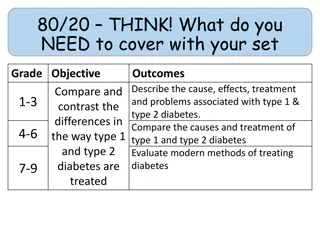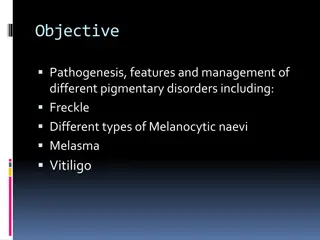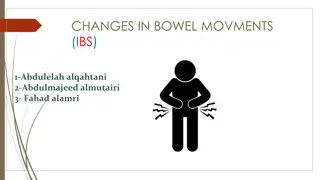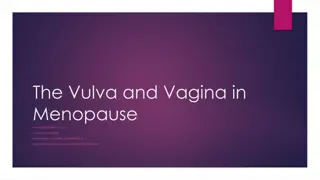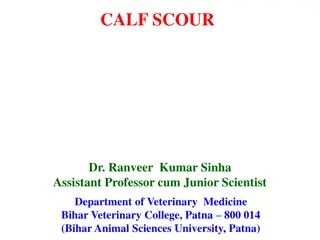Understanding Vitiligo: Causes, Symptoms, and Treatments
Vitiligo is a skin condition characterized by white patches due to loss of pigment cells. The causes include autoimmune disorders, genetic factors, neurogenic factors, and self-destruction of melanocytes. Symptoms include hair whitening, color loss in tissues, and changes in eye color. Treatments may involve phototherapy, topical creams, and skin grafting.
Download Presentation

Please find below an Image/Link to download the presentation.
The content on the website is provided AS IS for your information and personal use only. It may not be sold, licensed, or shared on other websites without obtaining consent from the author. Download presentation by click this link. If you encounter any issues during the download, it is possible that the publisher has removed the file from their server.
E N D
Presentation Transcript
* Vitiligo University of AL-Kafeel/ College of Pharmacy
* VITILIGO Alternative names of Vitiligo : Leukoderma Is a skin disease in which pigment cells of the body (melanocytes) are destroyed in certain areas of the body Its present by white skin patches in any location of the body due to depigmentation Melanocytes are cells that produces Melanin . Melanin causes the pigmentation of the skin. Any part of the body may be affected. Common sites are exposed areas (face, neck, eyes, nostrils, nipples, navel, genitalia), body folds (armpits, groin) and around pigmented moles (halo naevi).
Vitiligo varies in the amount of skin affected, with some patients experiencing few depigmented areas and others with widespread loss of skin color. The degree of pigment loss can vary within each vitiligo patch which means that there may be different shades of brown in a vitiligo patch. This is called trichrome . A border of darker skin may circle an area of light skin.
* Vitiligo is very visible on someone with a very dark complexion due to the prevalence of white splotches of skin. )
* SYMPTOMS & SIGNS Whitening or graying of the hair on your scalp, eyelashes, eyebrows or beard (leukotichia seen in segmental) Loss of color in the tissues that line the inside of your mouth Loss or change in color of the inner layer of your eye.This condition is not associated with physical pain or pain. Signs also appear as: Discolored skin at the face, arms, or Discolored pores and skin on other components of the frame (armpits, genitals, rectum, and so on.) mild colored tissue along the inner of mouth and nostril loss of color in the hair (head, eyebrows, eyelashes, and facial hair).
* What causes vitiligo? Although the causes of vitiligo aren t completely understood, there are a number of different theories: Autoimmune disorder: The affected person s immune system may develop antibodies that destroy melanocytes. Genetic factors: Certain factors that may increase the chance of getting vitiligo can be inherited. About 30% of vitiligo cases run in families. Neurogenic factors:A substance that is toxic to melanocytes may be released at nerve endings in the skin. Self-destruction:A defect in the melanocytes causes them to destroy themselves. Vitiligo may also be triggered by certain events, such as physical or emotional stress.
GENERALIZED VITILIGO AcrofacialVitiligo: Occurs on the parts away from the center of the body Affects distalend of fingers and facial orificesin circumferential pattern.
Vulgaris Vitiligo: Scattered patches Widely distributed
Universal Vitiligo: Nearly complete depigmentation
* Localized Vitiligo FocalVitiligo: Limited to one or few areas .Does not progress
Segmental Vitiligo: Unilateral and asymmetric in distribution .Only one side of the body is affected . Common in children
* MucosalVitiligo: Mucous membranes are affected
*Diagnosis Doctor will ask about medical history and examine your skin, possibly with a special lamp
*TREATMENT TREATMENT DEPENDS ON Age of patient Extent of disease Pattern of disease Cosmetic disability
Light therapy : Phototherapy with narrow band ultraviolet B (UVB) (320- 280) has been shown to stop or slow the progression of active vitiligo. You'll need therapy two to three times a week. It could take one to three months before you notice any change, and it could take six months or longer to get the full effect.
Combining psoralen and light therapy This treatment combines a plant-derived substance called psoralen with light therapy (photochemotherapy) to return color to the light patches. After you take psoralen by mouth or apply it to the affected skin, you're exposed to ultraviolet A (UVA) (320- 400 )light. This approach, while effective, is more difficult to administer and has been replaced in many practices by narrow band UVB therapy.
Removing the remaining color (depigmentation) : This therapy may be an option if your vitiligo is widespread and other treatments haven't worked. A depigmenting agent is applied to unaffected areas of skin. This gradually lightens the skin so that it blends with the discolored areas. The therapy is done once or twice a day for nine months or longer.


